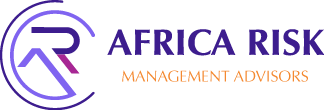About Course
Providers of credit across the world are invariably faced with the probability that some of the borrowers will default. Whereas the causes of credit default are varied and complex, it is generally accepted that by building the capacity of their teams to assess the creditworthiness of potential borrowers in the ever-busy business environments, providers of credit are able to significantly minimize credit defaults and, in the process, maximize profits, increase market share, minimize risk, and reduce the financial provisions that must be made against bad and doubtful debt.
Description
In 2016, Financial Sector Deepening (FSD Africa) commissioned a study to understand the state of credit risk management within the financial services industry in Africa using Kenya, Ghana and D.R. Congo as case studies. The final report made various observations including the existence of a large training need across the three countries sampled across all staff levels (entry/junior, middle management/ intermediate, executive/senior level). It was further observed that there is a generalized lack of organized training for entry-level staff which is the level that requires training to help them lay a firm foundation on the fundamentals of Financial Services and Risk Management. Moreover, relationship officers and managers are recruited from a variety of backgrounds and do not necessarily have relevant skills and experiences which exposes financial institutions to possible fraud or poor asset quality that as a result of poor credit management skills.Below is a timeline of activities that FSD Africa undertook through a multi-stakeholder consultative process.

This process (see summary report) led to the development of the Fundamentals of Credit Risk Management (FCRM) course. Africa Risk Institute (ARI) was involved from start to finish in the entire process and dedicated staff and resources in the development FCRM. ARI is an accredited training provider for the FCRM Course.
Objectives of the Course
The FCRM training will impart participants with practical Credit Risk Management Skills to enable them to effectively assess the financial health of organizations using financial and non-financial information. Participants will gain a detailed understanding of the end-to-end credit risk management process and how to ‘tell the story of a business’ using various aspects of information from financial statements, including ratio and cash flow analysis, among others.Financial Institutions are rolling out the FCRM to their analysts, relationship officers/managers, and wider teams with a view to: –
- Improve loan origination and overall quality of their loan book.
- Manage the portfolio at risk and reduce non-performing loans (NPLs).
- Standardize training ensuring benchmarking within the organization and externally.
- Maintain a healthy ratio of certified staff transferable across regional operations.
- Assess competence through an examination provided by an external third party.
- Comply with regulatory emphasis on skills development
Certification
Upon completion of the course, participants will receive certificates of completion from Africa Risk Institute. Those who sit for the International Certification will receive Certificates of competence from the Chartered Banker Institute (CBI).




